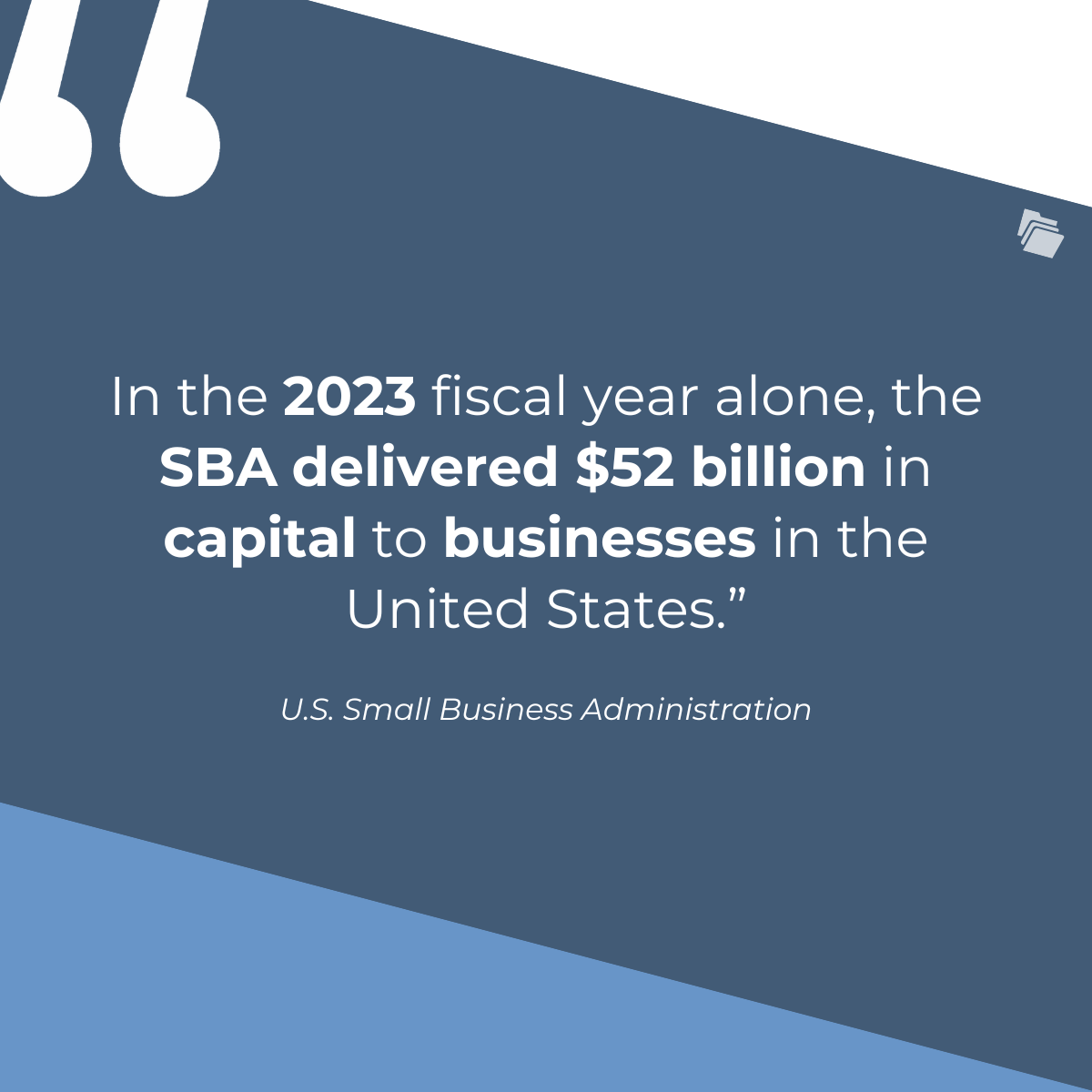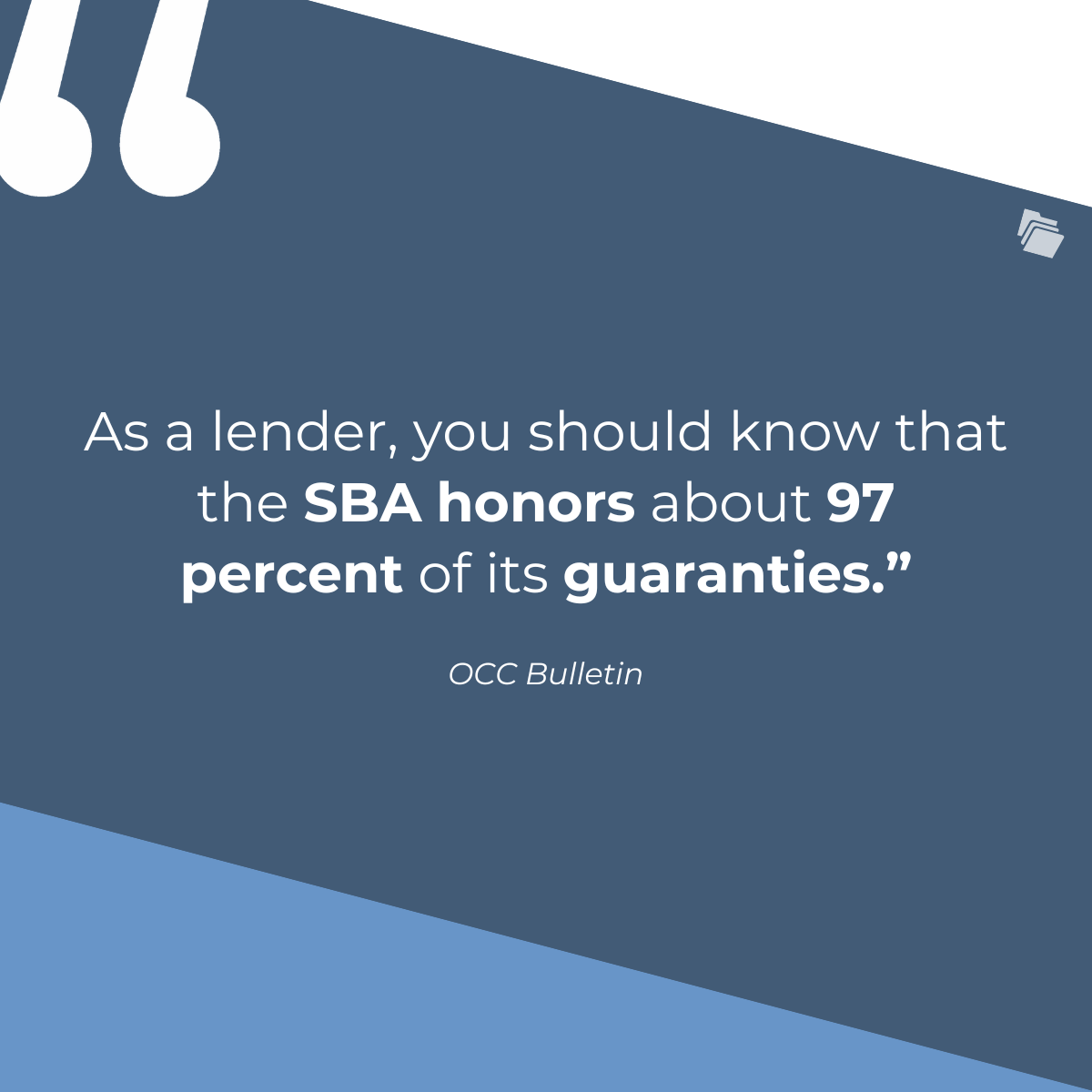The Small Business Administration (SBA) lending program is an important resource for your financial institution because of its ability to distribute capital to small businesses and community members at favorable terms. In the 2023 fiscal year alone, the SBA delivered $52 billion in capital to businesses in the United States.
However, these loans can become tedious and expensive when the SBA repeatedly denies your borrowers loan applications. Many of the primary reasons for denial are avoidable when you have proper systems in place to catch potential errors and risks in your SBA loan applications. Learn more about the most common reasons for SBA guaranty denials below and discover some strategies for overcoming strict SBA loan requirements.

Understanding SBA Guaranty Denials
A key benefit of SBA loans is that the federal government can provide a guaranty for these loans if a borrower defaults, making them less risky for lenders who participate in the program. Obtaining this benefit requires you to follow the many standards and legal requirements that the SBA must verify before approving a loan for the SBA program. You can meet the SBA’s standards through close attention to the necessary details of the loan package, including the borrower’s application and supporting documentation.
10 Common Reasons for SBA Guaranty Denials
Consider the following common errors that lenders have when seeking approval and guaranty for an SBA loan. The majority of these are addressable through two efforts. The first is proper due diligence of the borrower. The second is a firm understanding of the specific requirements for the type of SBA loan the borrower wants or needs.
1. The SBA Borrower Has an Insufficient Credit Score
The SBA cites poor credit history as a primary factor for declining a small business’s loan application. This could be either the credit score of the business or, for new companies, the personal credit score(s) of its owner(s). While the SBA does not set precise credit scores that borrowers must have to qualify for a loan, it does require lenders to evaluate creditworthiness based on the comparable requirements for non-SBA loans.
It’s important to verify this credit score before sending a loan application to the SBA for approval. If a borrower has concerns about their credit score, you could recommend several ways to improve it over time, including the following strategies:
- Make on-time payments for bills and other debts.
- Find your credit usage percentage and find ways to get it below 30 percent.
- Reduce other debts or increase income to improve your income-to-debt ratio.
2. The Borrower Lacks Sufficient Collateral to Secure the SBA Loan
A borrower’s collateral is a key component in evaluating their potential risk to you and the SBA when approving their loan. In the event of a default, the SBA generally requires lenders to have proper security in place and to liquidate this collateral before requesting a guaranty of the loan through the purchase process. The borrower needs proper rights and control over assets in an amount that satisfies the collateral needs for the loan size. Additionally, the lender needs to ensure their priority over collateralized assets through proper UCC filings and security agreements.
3. There Is an Inadequate Business Plan
Having a well-researched and detailed business plan can also improve the chances of the SBA approving a loan application. The purpose of the business plan is to instill confidence in the SBA that your borrower has thought about how they will use the loan proceeds to grow the business and its profit.
The business plan also explains other essential aspects of the loan. First, it confirms the borrower plans to use the loan proceeds for an authorized use based on the type of SBA loan. Second, the business plan should show how the business can meet its loan obligation considering other business expenses and cash flow.
4. The SBA Borrower Has Limited Industry Experience
A lack of industry experience can further raise doubts about the chances of the borrower’s business succeeding. In turn, this could lower your reasonable assurance of the future repayment of the loan. The SBA may decline a loan application if the borrower does not have a related work history, education, or other experiences to support the business.
5. The Business Has Inadequate Cash Flow to Support Loan Repayment
A low cash flow is another sign that a borrower could struggle to repay the loan and will experience a default shortly after its approval. The SBA denies applications where the borrower’s cash flow does not support the ability to meet monthly debt obligations and ordinary business expenses.
6. The Borrower Has Outstanding Tax Obligations That Also Jeopardize SBA Loan Repayment
A borrower’s unresolved tax liability can present a challenge for lenders when submitting a loan application to the SBA. Like other debts and business expenses, unpaid taxes are another obligation that could affect a borrower’s ability to repay and give the SBA a reason to deny the guaranty loan. Lenders can request state and federal tax returns or search for active tax liens to verify a borrower’s current compliance with tax remittances.
7. The Borrower Has a Previous Bankruptcy or Default
Credit history is a key factor in your borrower’s credit score because it reflects their past behaviors in managing debt. A prior bankruptcy or loan default will pose a red flag to the SBA as another risk factor in the borrower’s likelihood of repaying the loan.
8. Other Unacceptable Legal Issues with the SBA Loan Application
As funding from a federal government program, lenders and borrowers must follow necessary legal requirements for securing an SBA guaranty loan. These legal issues often occur through either the ineligibility of the business owners, business type, or business purpose. For example, businesses must be in the U.S. and can’t be owned by someone currently incarcerated, on probation, or under indictment for a felony crime involving financial misconduct.
9. The SBA Loan Application Contains Incomplete Documentation
The SBA may decline your borrower’s loan application if it does not contain information necessary to verify eligibility for the specific type of SBA loan. Additionally, the documentation should be able to provide reasonable assurances of the borrower’s ability to repay the SBA loan. For example, good credit score, sufficient collateral, and adequate business plan.
10. The Borrower Fails to Meet the SBA Size Standards
The SBA program is meant for small businesses in the U.S., which is why size standards exist to limit participation to the intended borrowers. Current regulations provide a framework for the SBA to evaluate compliance with the size standards based on key metrics from the borrower’s North American Industry Classification (NAICS). For example:
- Degree of competition
- Average firm size
- Start-up costs
- Barriers to entry
You can find the most recent SBA size standards effective March 17, 2023, which provide industry limits based on either revenue or the number of employees. For example, size standards for the logging industry are currently set at 500 employees.
Strategies for Overcoming Your Client’s Chances of an SBA Guaranty Denials
As a lender, you should know that the SBA honors about 97 percent of its guaranties. You can improve your SBA guaranty denial rate through investment in your SBA resources and application process. For example, hire professionals experienced with SBA loans to oversee your lending program or to provide temporary consultations to improve the current transaction process. Additionally, you may consider how technology could aid in the efficiency of your workflows for gathering documents necessary to fund small businesses faster.

With FileInvite, lenders can streamline the loan process for their borrowers by providing a centralized location for key application documents, information, and communications. Your team can easily track the real-time progress of their client’s application progress and send SMS notifications to borrowers about upcoming deadlines or outstanding submissions.
See How FileInvite Can Improve Your SBA Loan Process
Knowing the factors that are most important to the SBA’s approval of your client’s loan applications is the first step in serving as a successful broker or lender of SBA loans. The second key is creating a system around this knowledge that can properly gather loan documents and information to minimize the risk of denial. Optimize your system with FileInvite and build successful business relationships between your team and their clients.
To learn more and request a demo, visit FileInvite today.

Related Posts: